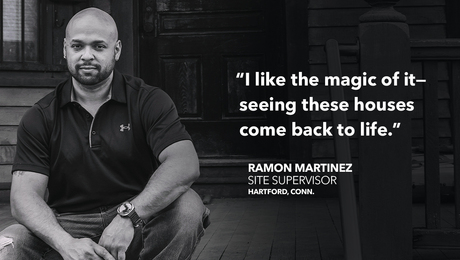
As remodeling contractors, we assault people’s houses with pry bars and sledgehammers every day. We plunge screaming saws into their walls and floors. It’s no big deal to us. But for a client who may experience a remodel only once in a lifetime, it is a big deal. Sadly, many remodelers never see their clients’ underlying cloud of fear and anxiety until it’s too late.
The potential for remodeling trauma decreases proportionately to increased confidence in the contractor. We gain our clients’ confidence by demonstrating a mastery of our craft. But unfortunately, we need to do considerable demolition prior to an opportunity to demonstrate our talents as builders. By then, deep remodeling trauma may have already set in. And once trauma has occurred, it can be very hard to alleviate and all too easy to reinforce.
Here are some of the pitfalls that trigger remodeling trauma and how those problems can be avoided.
Cost overruns
You’re in the beginning of remodeling a kitchen, but you’ve overlooked replacing the range hood. And in haste, you forgot to allocate time to remodel the soffit above the existing cabinets. Now when some unseen condition arises, you’ll be asking the clients for a third or fourth change instead of a first. Each of these changes results in a cost overrun, and your clients could be well on their way to a case of remodeling trauma.
The best way to minimize cost overruns is to communicate the possibility of unexpected conditions to the clients before you break out your tools. Review your change-order policy with clients and carefully plan each project with a customized checklist. Bringing in a job on budget can be a huge marketing bonus.
Job-site mess and clutter
It’s easy to get lazy at the end of the day, or maybe you’re one of those contractors who just has to do one more thing instead of cleaning up before quitting time. Perhaps you’re just too cheap to rent a Dumpster.
Truth be told, a clean job site is a safer and more productive job site. Reducing clutter minimizes safety hazards as well as all that wasted time looking for or stumbling over things. So rent that Dumpster and clean up at the end of each day. Schedule a big cleanup at week’s end. Assemble a cleanup cart or kit if you don’t already have one, and use it.
A clean, uncluttered job site helps to keep your clients at ease, and it presents a more professional appearance. Plus, the increased productivity means more money in your pocket.
The not-what-we-expected syndrome
Back to your kitchen remodel: That soffit detail you’d figured on working out later is now sticking out like a sore thumb because the soffit didn’t line up properly with the cabinets. The clients’ eyes bug out like saucers as they stare, trying to figure out why their dream kitchen doesn’t look quite right.
The solution isn’t easy to swallow: Rip it out and do it right. But that’s going to cost you time and money. And the clients’ anxiety level is already rising. The fact is that the cost to you in bad word of mouth is much greater than the couple of hundred bucks that it’s going to take to rebuild the soffit properly.
The problem here could have arisen from incomplete detail drawings and written specifications, not enough (or poorly thought out) visual aids or poor communication during the preconstruction meetings with the clients. The solution to the problem is to draft and review complete detail drawings and written specs with the clients. They then should be given a few days to mull over the plans and specs instead of being pressured into signing off on them right away.
“For a client who may experience a remodel only once in a lifetime, it is a big deal. Sadly, many remodelers never see their clients’ underlying fear and anxiety until it’s too late.”
Contractors also should have checklists for fixtures, appliances, hardware, etc., that the clients can review to make choices. But instead of overwhelming clients with the myriad choices available, provide three or four quality choices for products that you like to work with, such as four types of faucets for a vanity. Both you and the clients then have some control over the finished product. But make it clear that they can look at other choices, too, if your samples don’t suit their needs or tastes.
The goal here is for you to encounter no surprises; everyone knows what the finished product will look like. Decisions are streamlined, and subcontractors and workers aren’t hit with any unexpected products requiring additional labor and/or materials to install.
Project takes too long
I keep coming back to planning. When the plans are ironclad, the inevitable curveballs are just momentary blips in production, hardly noticeable. But when you need to stop and rethink every step, planning and drafting in the field, you’re bound to miss some things, and those curveballs will be beaning you constantly.
The ounce of prevention here is making decisions prior to cutting lumber. Realistic schedules need to be produced. A proper sequence of events should be spelled out clearly so that the necessary materials are on hand at the right time: Don’t gut the kitchen until the cabinets are ready to install.
“When you deliver low-impact, on-time remodeling service, you set yourself apart from the pack. . .”
Decisions, and the need to make decisions, must be communicated to clients in a timely manner. Plan each project completely. Communicate details, schedules and potential disruptions to schedules, such as change orders, clearly and sensibly. Try to schedule work when the clients are out of town, and make plans to work overtime. Also, develop checklists to streamline a project as it runs through the hands of the various subs.
The biggest benefit is that you get in and out of a job when both you and your clients expect. Your next client doesn’t get pushed back, you complete more jobs per year, and your references glow even more brightly. Better still, when you deliver this kind of low-impact, on-time remodeling service, you set yourself apart from the pack, which warrants your charging higher rates.
Disruption of their private world
One of the most commonly overlooked causes of remodeling trauma is the fact that as remodelers, we are constantly invading and disrupting our clients’ lives. Workers strolling in and out of the house day after day can take a toll on clients, even if they’ve been forewarned. Dust, boot tracks, messy bathrooms, loud radios and sketchy tradespeople are just a few of the sure ways that this disruption can foster clients’ anxiety.
So rent a job-site Porta-Potty and take active dust-control measures. Don’t play the radio, or use Walkmans instead. Always insist that employees and subs present a professional appearance.
Minimal disturbance of the clients’ everyday lives keeps them in a better state of mind. You’ll find it easier to chat cheerfully with them at the beginning and end of the day, which leads to them bragging about you instead of complaining.
Now show ’em what you can really do
Proper planning, communication and cleanliness are all ways to put you on the road to anxiety-free remodeling for both you and your clients. By developing a system of written specifications, accurate drawings and realistic project schedules and having weekly meetings with clients, the chance of remodeling trauma can be all but eliminated.
Not only will your clients be happier, but your productivity and profits should also increase dramatically. And once clients have complete confidence in your ability to plan and run a project, you’ll be free to dazzle them with your real talents as a craftsperson.

























